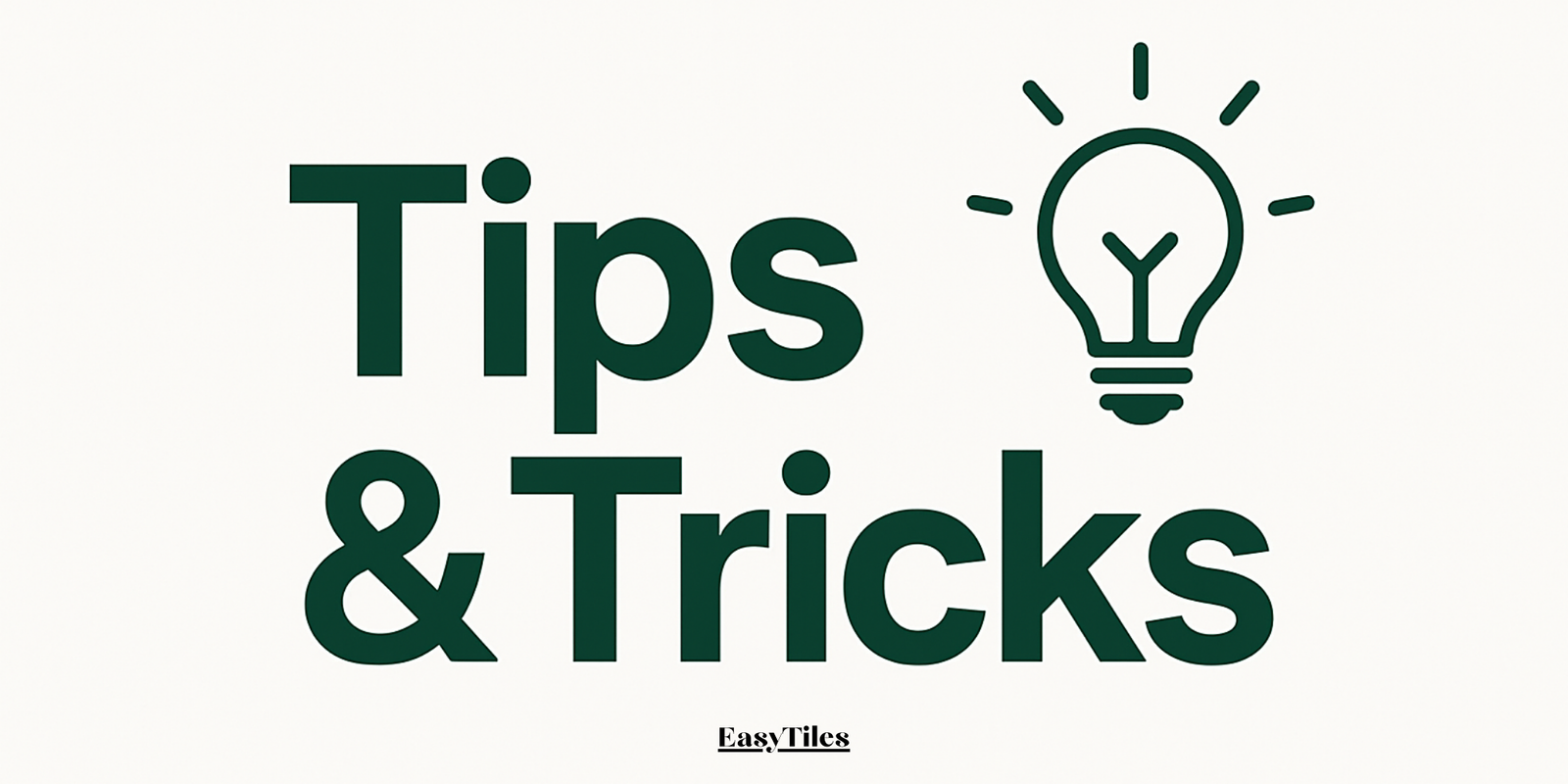
Tips & Tricks
Where can you use EasyTiles?
EasyTiles are versatile and easy to apply to various surfaces. Here are some ideal applications:
- Kitchen backsplashes: Resistant to splashes and easy to clean. Note: we recommend keeping a minimum of 15 cm distance between the tiles and the stove.
- Bathrooms (outside the shower): Our adhesive tiles are moisture-resistant but not suitable for direct water contact such as in a shower.
- Furniture upgrades: Perfect for renovating tables, cabinets, or other furniture.
- Wall decoration: Create a unique accent wall without permanent changes.
Where should you not use EasyTiles?
While EasyTiles are useful in many situations, there are some surfaces where they are less suitable:
- Inside showers and wet areas: Constant exposure to water may reduce adhesion.
- Floors: Not suitable for walking on, as they cannot withstand heavy pressure.
- Outdoor spaces: Extreme weather conditions may affect durability.
- Uneven or porous surfaces: A smooth and clean surface is required for optimal adhesion.
What should you consider when applying?
For best results, keep the following tips in mind:
- Clean the surface: Make sure the surface is grease-free, not dirty, dry, and smooth.
- Measure and plan: Determine the layout to minimize cutting and waste.
- Press firmly: Ensure good adhesion by pressing the tiles down firmly.
- Avoid direct water contact: Especially around edges and corners where water might seep in.
How to remove EasyTiles?
Removing EasyTiles is simple, but the approach depends on the surface:
- On tiles: Simply peel them off without leaving any residue.
- On wallpaper, painted, or plastered walls: Use a heat gun or hairdryer to soften the adhesive and minimize damage.
Suitable surfaces:
- Smooth ceramic tiles
- Glass
- Lacquered wood panels
- Smooth natural stone
- Plastic surfaces (like PVC, acrylic)
- Smooth wallpaper
- Melamine or laminate
- Painted walls (smooth and non-porous)
- Aluminum or metal (degreased)
Unsuitable surfaces:
- Uneven or rough walls (e.g., brick or textured plaster)
- Textured wallpaper
- Floors
- Untreated wood
- Powdery or porous plaster
- Walls with chalking latex paint
- Unsealed wood or cork
- Bare concrete without primer or sealer
- Very wet or humid areas (e.g., walk-in showers)
- Outdoor walls or areas with temperature fluctuations

